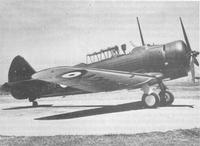


Chapter 13
I Colonial Origins
II First World War
III Between The World Wars
IV The Second World War
V Post-second World War
VI After The Joint Project
VII Science And Decisions At The Top
VIII Armed Services Technology
IX New Tasks And Projects
X Transfer Of Research And Development
XI Acknowledgement
References
Index
Search
Help
Contact us

As it happened, that sector of Australia's developing resources judged most needing scientific support in the Post-War era was related more to primary than to secondary industry. The onset and course of the economic depression of the 1930s did nothing to change this emphasis. It was the emergence of disquiet about Japan's growing industrial strength and aspirations in the Pacific area that finally led the Australian Government to look to the well-being of its secondary industry. Despite the anxious pleadings of prominent industrialists, notably Essington Lewis of the Broken Hill Proprietary Company (BHP), who had persistently observed the signs of growing militarism in Japan, the Government was loath to take positive steps towards a higher level of industrialisation. It was left to private operators to take a lead in forming a syndicate to promote the establishment of modern industries having defence potential. The main contributors were Essington Lewis himself on behalf of BHP, Sir Lennon Raws for Imperial Chemical Industries (ICI), W. S. Robinson (BHAS), and L. J. Hartnett for General Motors (Holdens). The initial objective was the setting up of an aircraft and motor vehicle industry.[14]
In mounting its first project, to survey the world aircraft manufacturing scene in order to develop plans for manufacture of a type best suited initially to Australian resources, the Syndicate chose L. J. Wackett to lead a mission comprising also Wing Commander H. C. Harrison and Squadron Leader A. W. Murphy. Wackett had already acquired a reputation for initiative and persistence in designing, developing and building, with slender resources, and with scant encouragement, several types of amphibious aircraft, seaplanes, and land based aircraft.
The type ultimately selected for manufacture was the North American NA-33 advanced trainer of all metal stressed skin construction and powered with a Pratt and Whitney seven cylinder single row radial engine (selected for its development potential). Considerations leading to this choice involved a penetrating appraisal of longer term development potential, especially in the choice of engine. In this case the seven cylinder engine had many parts in common with a more powerful fourteen cylinder type then under development in the United States. There was some disappointment expressed that no British type was considered. Two factors operated here; firstly, none suited Australian requirements and secondly, British apathy towards encouraging manufacture in Australia was effective. A measure of Australian resolve in establishing new industry is seen in the creation of the Commonwealth Aircraft Corporation and its delivery, in a short 33 months, of its first machine, the CA I Wirraway from its factory at Fishermen's Bend near Melbourne in response to a Government order for forty aircraft. The Wackett trainer soon followed. Other new industrial developments which assisted the infant aircraft industry were the introduction of an aluminium magnesium foundry, the production of sheet aluminium of high quality, and alloy extruding and production of high grade alloy steel forgings and tubing.

Organisations in Australian Science at Work - Commonwealth Aircraft Corporation (C.A.C.); Commonwealth Arsenal; CSIRO
People in Bright Sparcs - Harrison, Wing Commander H. C.; Hartnett, Sir Lawrence J.; Lewis, Essington; Murphy, Sq. Ldr. A. W.; Raws, Sir Lennon; Robinson, W. S.; Wackett, L. J.
 |
Australian Academy of Technological Sciences and Engineering |  |
© 1988 Print Edition pages 925 - 926, Online Edition 2000
Published by Australian Science and Technology Heritage Centre, using the Web Academic Resource Publisher
http://www.austehc.unimelb.edu.au/tia/906.html